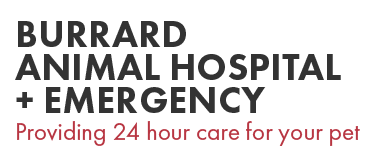Library
-
It is not difficult to find your pet the extra care they may need if you have a busy schedule or are traveling. With the excellent pet sitter options available today, having a pet at home does not mean you cannot take a vacation every once in a while. Be sure to interview any potential sitters and use trusted friends, your vet, or online resources when looking for sitters. Hiring a pet sitter for your pet may be like a vacation for them as well!
-
This is no lazy old hound dog. The Petit Basset Griffon Vendeen attracts attention wherever she goes because of her merry, energetic disposition. She's always on the lookout for fun and excitement, especially in the form of an outdoor adventure.
-
Pets may have visible or hidden disabilities that require some adjustments to their care or lifestyle to maximize their quality of life. With some support, these pets can have a fairly normal life and be just as loving as any other pet.
-
The elegant, classy Pharaoh Hound is a striking companion. His handsome good looks always draw attention.
-
Pharyngostomy tubes are placed through the skin of the neck behind the jaw through the pharynx, into the esophagus to enable ongoing nutrition in dogs that either refuse to eat or are unable to chew and swallow food. A diet will be recommended by your veterinarian but must be liquefied with water before it can pass through the tube. Step-by-step instructions are given for tube feeding. The decision to remove the tube needs to be determined by your veterinarian.
-
The domestic pigeon includes over 300 breeds, all descending from the rock dove. They originated in Eurasia, but are now found all over the world. They come in many color combinations and their plumage can include anything from feathered feet to crested, maned, or hooded heads. They are generally hardy birds that are easy to tame and care for. As with any pet, pigeons require regular, routine veterinary health checkups.
-
Pigmentary keratitis is a discoloration of the cornea due to chronic inflammation and is most common in brachycephalic breeds. In many cases, complete resolution cannot be achieved, but the condition can be stopped or slowed down if the underlying cause can be identified and treated. Surgery and medications may be used to help address the problem.
-
Pituitary macroadenomas are large tumors of the pituitary gland that are either functional (secrete hormones) or non-functional (do not secrete hormones). The clinical signs depend on the type of macroadenoma, though become severe over time in either case. Diagnosis requires specialized CT or MRI imaging. This handout explains the effects of macroadenomas in cats and the treatment options available.
-
Pituitary macroadenomas are large tumors of the pituitary gland that are either functional (secrete hormones) or non-functional (do not secrete hormones). The most common functional pituitary macroadenoma in the dog secretes the hormone ACTH, causing increased cortisol levels and Cushing’s disease. Non-functional macroadenomas cause clinical signs through compression of nearby structures resulting in vision changes, diabetes insipidus, and neurologic disorders. This handout explains the effects of these tumors on dogs, how they are diagnosed, and the treatment options available.
-
Many birds naturally eat plants as part of their diet. Some birds will chew on and possibly consume plants out of curiosity or during play. Many toxic plants will just make a bird sick if they ingest them, but some can kill them. Fortunately, rather than ingesting plants, most birds shred and play with plants with which they come in contact. This handout catalogues many of the indoor and outdoor plants that are considered to be potentially toxic to birds.


